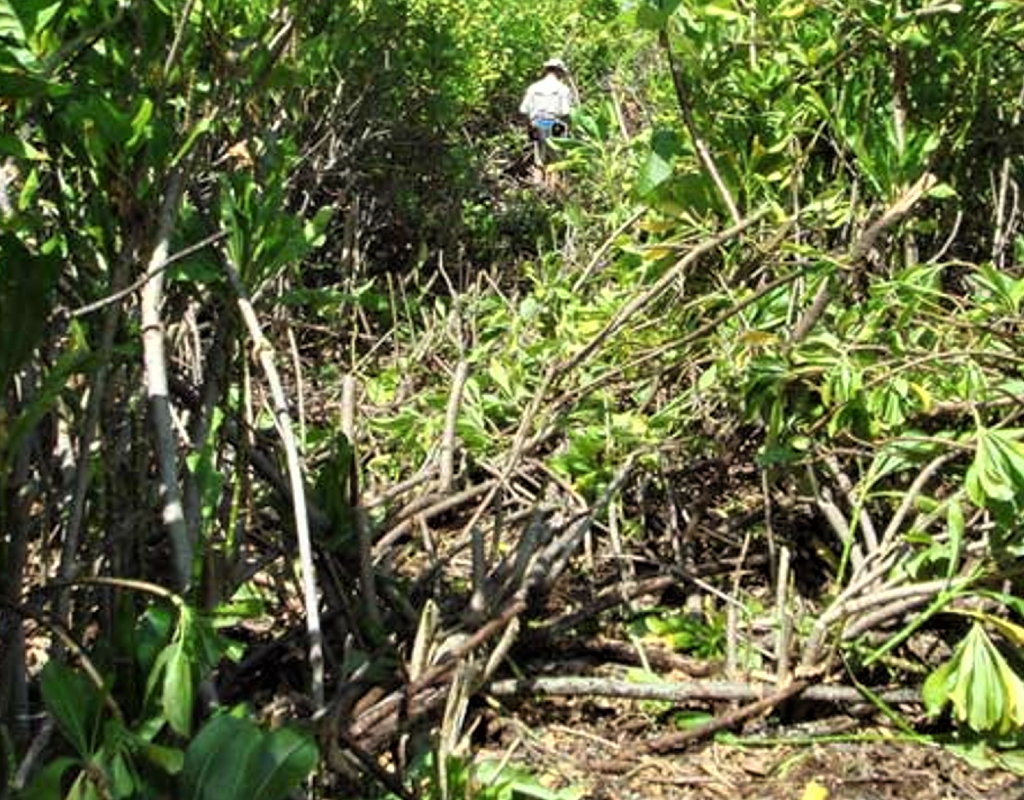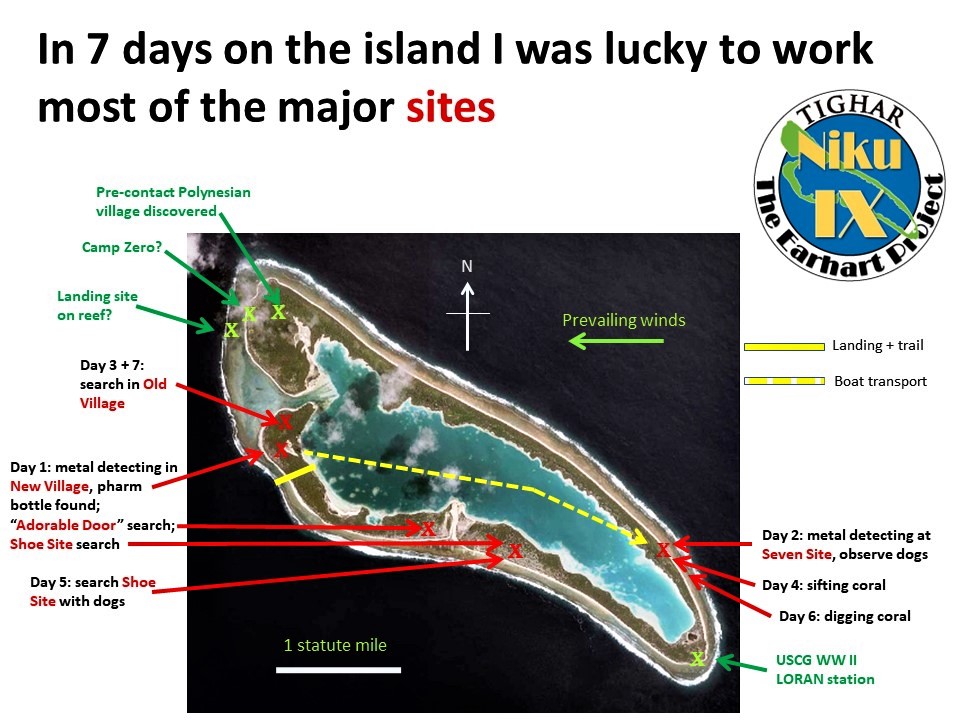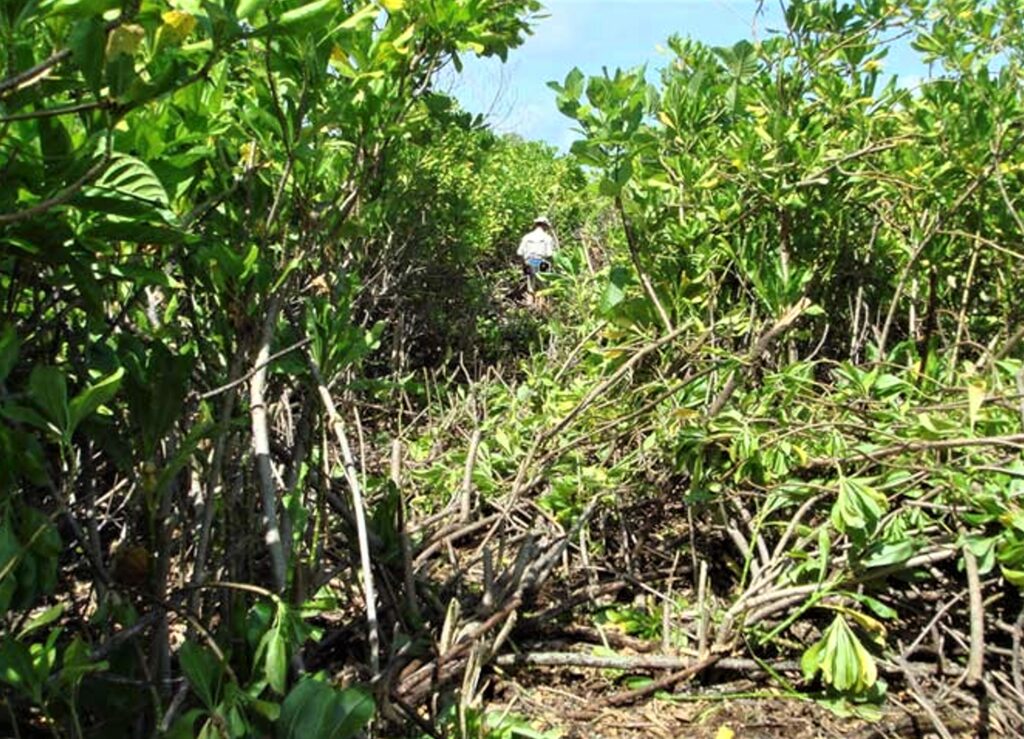
Blog: A Sarky Song about Earhart Theories: Off We Go, Into the Wild Bird Guano!, Part 3

If you Google “Songs about Amelia Earhart,” you will find various songs about the disappearance of Amelia Earhart, Fred Noonan, and their Lockheed Electra 10E. Not to be outdone, I wrote a couple myself. When I participated in a major Earhart expedition, I was told that my songs and singing in general helped to bring the disparate team together, so perhaps they are worthy of publication. I will present one light-hearted, rather “sarky” (sarcastic) song this week, and a serious one next week.
The first one, “Off We Go into the Wild Bird Guano,” requires some explanation. The tune is the US Air Force anthem. The first verse came from the TIGHAR (The International Group for Historic Aircraft Recovery) Songbook; the other verses are mine. The chords (shown in brackets) are appropriate for a guitar or ukulele.
The song is about the forensic dog and archaeology expeditions run in 2017 and 2019 by TIGHAR and the National Geographic Society to remote, uninhabited Nikumaroro atoll in the South Pacific. To get to the main dig site on the island, our team had to cross the island’s lagoon by boat and then wade through a wide beach of foot-deep liquid bird guano – hence the name of the song.
Much of the atoll is covered with dense, twisting, hard-as-nails “scaveola” bushes. These are the bane of archaeologists since they must be cut and cleared with immense effort before archaeological digging can begin, and any “hits” (finds) obtained. Hits are made by gently digging with trowels, and using ¼ inch metal screens to slowly sift through tons of coral and soil.
Since it is near the equator, Nikumaroro is always hot and humid, when it is not being hit by massive storms that can wash over large parts of the atoll.
The island is home to hundreds of thousands of crabs — one species the size of softballs, and another the size of cafeteria trays. These latter, the coconut crabs, are so powerful that they can crack open a coconut – or a human head. Hence we could not sleep ashore. Our rather gruesome theory is that Amelia died (likely from exposure or lack of water) leaning against a large Ren tree, and then the crabs dismembered and ate her body, and carried away bits to their burrows. Yeech!
The large “Skull Hole” is where we think a skull – likely Amelia’s — was found in 1940 by islanders. Our forensic dogs repeatedly alerted in this Hole, but we did not find any new bones.
As described in a previous column, the “Marshall Islands theory” of the disappearance is that Earhart and Noonan were captured in the Marshalls by Japanese Imperial forces, and taken to Saipan (far to the west) for imprisonment, interrogation and execution. Two bizarre, disproven theories are that Amelia became Tokyo Rose, and that she survived the crash and ended up in New Jersey.
“Piper” was the most active of our lovable, intelligent four Border Collie forensic dogs, and we would have happily followed Piper down to Hell, digging all the way, in order to find Amelia Earhart!
Enjoy the song!
OFF WE GO, INTO THE WILD BIRD GUANO
[G] Off we go, [D7] into the wild bird [G] guano,
[C] Trowel boys, give ‘em the [G] gun!
[G] We will play [D7] our screens like [G] pianos,
[A] As we scorch, under the [D7] sun!
[G] Scaveola, [D7] will never [G] stop us
[C] We will cut it into [G] bits
[G] So our digs, [D7] with simply no [G] fuss
[A] Then will get, a billion [D7] hits!
[G] Those pesky crabs [D7] lurk in the [G] Skull Hole
[C] Hiding the wings of the [G] plane!
[G] To resurrect [D7] Electra it is our [G] goal
[A] And soon we’ll fly her home [D7] again!
[G] Amelia, she [D7] escaped from [G] Saipan
[C] She became Tokyo [G] Rose
[G] Then she [D7] swam home from [G] Japan
[A] And at them she thumbed her [D7] nose
[G] We all know the [D7] answer in our [G] hearts…
[C] In New Jersey, exit [G] 64
[G] There we’ll [D7] find, our Ms. [G] Earhart
[A] Who is now, one hundred and [D7] twenty-four!
[G] We will dig, a [D7] hole through to [G] China,
[C] Following Piper down to [B7] Hell,
[G] We’ll dig [E] real big, we’ll [Am] swig, we’ll [G7] pig,
[G] Our TIGHAR team is [D7] really, really [G] swell!
Photos courtesy Lew Toulmin










Engage us on Facebook
Follow us on Twitter
Tweets by @mymcmedia